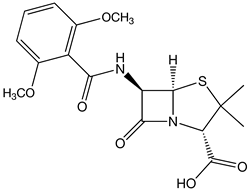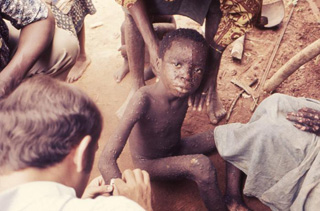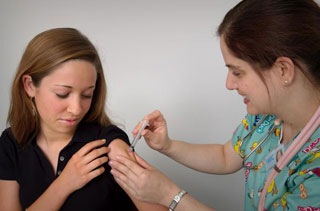Recent Events
1960: Methicillin developed
Methicillin was developed to treat infections caused by bacteria resistant to penicillin. MRSA (methicillin-resistant Staphylococcus aureus) is a term used to describe strains of the bacterium Staphylococcus aureus which are resistant to all penicillin-type antibiotics.

Structure of methicillin
1979: Smallpox eradicated

Courtesy CDC/Jean Roy
The last case of smallpox occurred in Somalia in 1977 following a global eradication campaign. Smallpox used to kill up to 30% of those who caught it. Most of the remainder suffered complications such as blindness or pockmarks - pitted scars on their skin. No effective treatment for smallpox was ever discovered.
2008: Cervical cancer vaccination programme introduced in UK
Infection with human papilloma virus (HPV) can cause cervical cancer or genital warts. A national programme to vaccinate girls aged 12-13 against HPV commenced in September 2008. A three year programme to vaccinate older girls started at the same time.
The vaccination involves three injections given over a six month period. It has been shown to protect against two types of HPV which together cause 70% of cases of cervical cancer. In the UK more than 1000 women a year die from cervical cancer despite cervical screening being offered to all women aged 25 to 65.
Other types of HPV cause skin warts and verrucas.

Courtesy CDC/Judy Schmidt













